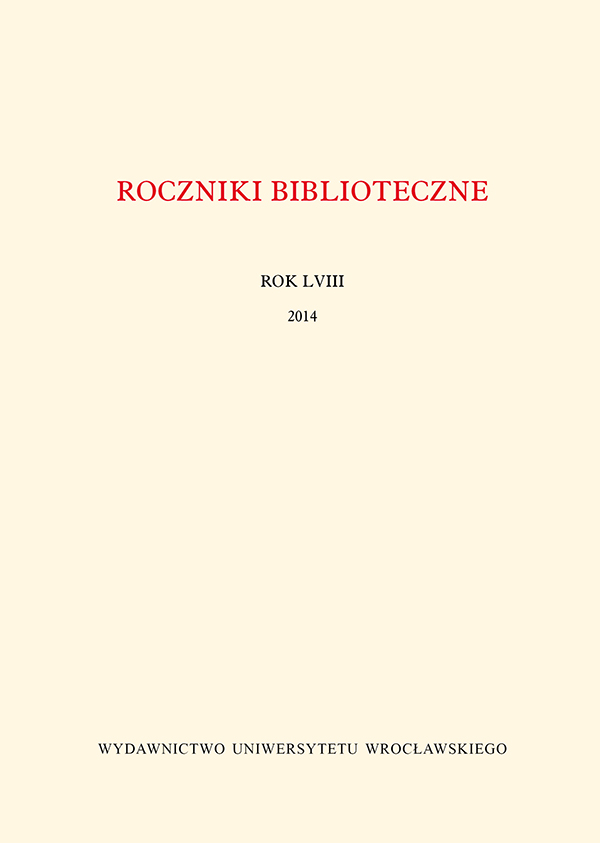

Artykuły i materiały

PROCESSING AND CATALOGUING OF EARLY MODERN AND MODERN 16TH–20TH CENTURIES MANUSCRIPTS IN POLISH LIBRARIES IN THE SECOND HALF OF THE 20TH CENTURY. METHODOLOGY — THEORY AND PRACTICE
A lack of uniform methods in the processing of manuscripts in Polish libraries prompted efforts to formulate theoretical principles, a process that began in the early 20th century. The publication in 1955 of Wytyczne opracowania rękopisów w bibliotekach polskich [Guidelines to the processing of manuscripts in Polish libraries] made it possible to standardise the various elements of catalogue description and set the basic rules of processing manuscripts, although it did not eliminate all the problems. This often led to considerable differences in methods used in practice in the approach to manuscripts in the largest Polish libraries, which was reflected in numerous printed catalogues of manuscripts published from 1955 onwards. Problems concerned e.g. Manuscripts comprising loose materials which were combined into units, an approach that often had its roots in insufficient respect for the principles of archival provenance. When it came to the creation of catalogue descriptions, the most uniform rules were formulated with regard to correspondence, while in the other types of manuscripts personal papers, collections of literary and historical materials, memoirs etc. there were often considerable differences. They concerned primarily the level of detail in the description of the contents of the manuscripts. Considerable differences were also to be found in the rules for creating external descriptions, especially elements concerning the dimensions of the manuscripts and periods in which they originated. Nor was there any uniformity when it came to the rules of inventorying manuscripts, especially correspondence, and maintaining the integrity of legacies in manuscript catalogues.